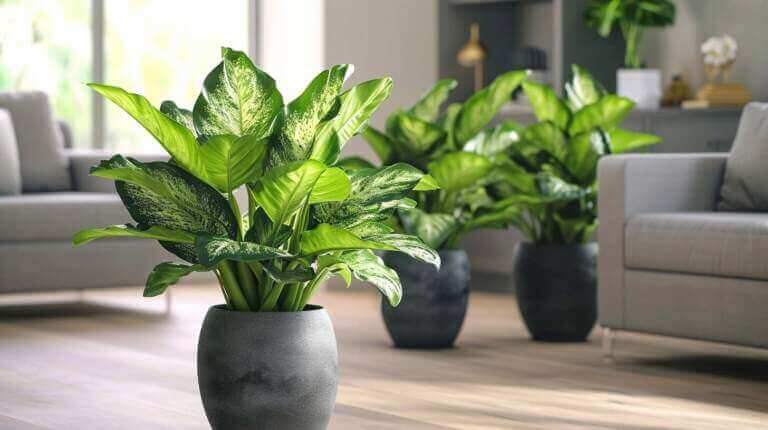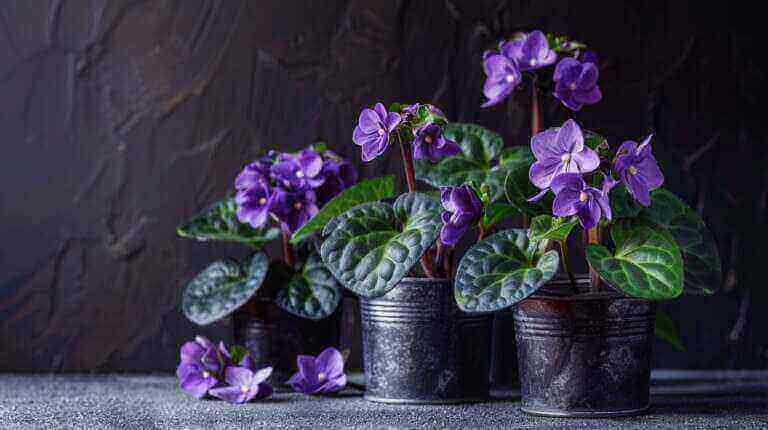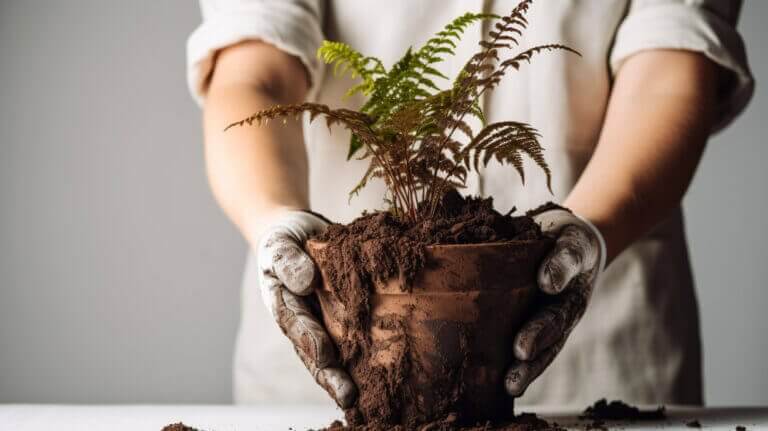What Is The Best Pot Size For Optimal Chinese Money Plant(Pilea Peperomioides) Growth
When it comes to growing healthy and thriving Pilea peperomioides, choosing the right pot size is crucial. Many people mistakenly believe that the size of the plant should determine the pot size, but in reality, it’s the size of the roots that matters most. The roots of Pilea peperomioides are relatively small compared to the crown of the plant, and providing them with the appropriate space for growth is essential.
For optimal Pilea peperomioides growth, it is recommended to select a pot that is about 2 inches larger in diameter than the root ball. This allows enough room for the roots to spread and develop as the plant matures. Additionally, make sure that the pot has proper drainage holes to prevent excess moisture and potential root rot.
Terracotta pots are often preferred for Pilea peperomioides as they allow for better aeration of the soil. However, you can also use plastic or glazed ceramic pots if that’s what you have on hand. Just remember to avoid overpotting by choosing a pot that is only one size larger than the current one. Large containers with excessive soil can stay too wet, leading to root rot.
Key Takeaways
- Choose a pot that is about 2 inches larger in diameter than the root ball of your Pilea peperomioides.
- Ensure the pot has proper drainage holes to prevent excess moisture.
- Terracotta pots are preferred for better aeration, but plastic or glazed ceramic pots can also be used.
- Avoid overpotting by choosing a pot that is only one size larger than the current one.
- If your plant is unhappy in a large pot, consider downsizing to a smaller pot and adjusting watering frequency accordingly.
The Best Potting Soil for Chinese Money Plant(Pilea Peperomioides)
When it comes to providing optimal care for your Pilea peperomioides, choosing the right potting soil is essential. These plants thrive in well-drained soil that allows for proper root health and growth. Here are some key considerations for selecting the best potting soil for your Pilea peperomioides:
- High-quality organic potting soil: Opt for a potting mix that is specifically formulated for houseplants. Look for soil that is based on peat moss or coir fiber, as these materials provide good moisture retention while still allowing for adequate drainage.
- Perlite or other amendments: Adding perlite or coarse sand to the potting mix can improve drainage and aeration. These amendments help prevent excess moisture, which can lead to root rot. Remember to follow the recommended ratios for the best results.
- Avoid garden soil: While it may be tempting to use soil from your garden, it’s not recommended for Pilea peperomioides. Garden soil may contain pests, diseases, or other impurities that can harm the plant. Stick to a high-quality potting mix for optimal results.
By choosing the right potting soil for your Pilea peperomioides, you are providing the ideal environment for healthy and thriving growth.
Table: Comparison of Recommended Potting Soils
| Potting Soil Brand | Key Features | Price |
|---|---|---|
| Brand A | Organic, peat moss-based mix with added perlite for improved drainage | $$ |
| Brand B | Coir fiber-based mix with vermiculite for moisture retention | $ |
| Brand C | Blend of organic matter, sand, and perlite for optimal aeration | $$ |
| Brand D | Specialized mix for succulents and cacti, ideal for well-draining conditions | $ |
Table: Comparison of recommended potting soils for Pilea peperomioides care. Prices are subjective and can vary based on location and availability.
Remember to always consider the specific needs of your Pilea peperomioides when selecting potting soil. By providing a well-drained and nutrient-rich growth medium, you are setting the stage for a healthy and thriving plant.
Pilea Peperomioides Plant Care – Light and Water Requirements
When it comes to caring for your Pilea peperomioides, providing the right amount of light and water is crucial for its health and growth. These plants thrive in bright indirect light, so it’s important to find a suitable spot in your home. Ideally, place your Pilea in an east- or west-facing window to ensure it receives enough light without being exposed to direct sunlight. If the leaves start turning yellowish-green, it’s a sign that your plant is getting too much sun and needs to be moved to a shadier spot. Remember to rotate the pot regularly to promote even growth.
Watering plays a vital role in the care of your Pilea peperomioides. It’s important to strike a balance between keeping the soil moist and avoiding overwatering. Water your plant thoroughly until water drains out of the pot’s drainage holes, and then allow the top inch or two of soil to dry out before watering again. Avoid letting the soil dry out completely, as this can cause leaf discoloration. To maintain the plant’s health, use de-chlorinated tap water or rainwater for watering and ensure proper drainage to prevent standing water.
In addition to light and water, it’s essential to fertilize your Pilea peperomioides once a month during its active growth period. Use a diluted organic houseplant fertilizer to provide the necessary nutrients. However, keep in mind the potential salt buildup in the soil and flush it periodically with water to prevent any harm to the plant. By following these guidelines, you can ensure your Pilea peperomioides thrives and remains healthy.
Assessing When to Repot Pilea Plant
When it comes to the optimal growth of the Chinese Money Plant, choosing the right pot size is crucial. Repotting plays a significant role in ensuring that your plant has enough space to thrive and develop a healthy root system. Here are some signs that indicate the need for repotting and steps to move your Chinese Money Plant to a larger pot.
Signs that indicate the need for repotting
- Roots peeking out of the drainage holes: If you notice roots emerging from the drainage holes at the bottom of the pot, it’s a clear sign that your Chinese Money Plant has outgrown its current pot and needs to be repotted.
- Slow growth or stunted development: If your plant’s growth has significantly slowed down or it appears to be struggling, it could be due to lack of space for its root system to expand. Repotting can help provide the necessary room for growth and allow the plant to develop properly.
- Water draining too quickly: If the water you pour into the pot drains very quickly without being absorbed by the soil, it may indicate that the roots have taken up most of the available space, and repotting is necessary to provide more room for the roots to grow and absorb water.
How to move the Chinese Money Plant to a larger pot
- Choose the right pot size: Select a pot that is 2 inches larger in diameter than the root ball of your Chinese Money Plant. This provides adequate space for the roots to spread out and grow without being constricted.
- Prepare the new pot: Fill the new pot with well-draining soil, leaving enough space at the top to accommodate the plant and additional soil.
- Remove the plant from the current pot: Gently tilt the pot and carefully slide the plant out. If the roots are tightly packed, you can gently loosen them with your fingers or a small tool.
- Place the plant in the new pot: Position the plant in the center of the new pot and fill in the gaps with fresh soil, ensuring that it is evenly distributed around the roots.
- Water and settle the plant: Give the plant a thorough watering to help settle the soil and eliminate any air pockets. Allow the excess water to drain out.
Remember, repotting should be done during the plant’s active growth phase, usually in spring or early summer. By assessing the signs and following these steps, you can ensure the optimal growth and health of your Chinese Money Plant.
FAQ
What is the best pot size for optimal growth of my Chinese Money Plant (Pilea Peperomioides)?
A pot that is 1-2 inches larger in diameter than the current pot is ideal for promoting healthy growth of the plant. This allows room for the roots to expand without being overwhelmed by too much space.
How do I choose the right pot for my Pilea Peperomioides?
It is recommended to use a plastic pot with drainage holes to ensure proper moisture management for the plant. This helps prevent waterlogging, which can lead to root rot.
When should I repot my Pilea Peperomioides?
It is best to repot your Chinese Money Plant when you notice the roots starting to outgrow the current pot, typically every 1-2 years. Repotting in spring is ideal as it coincides with the plant’s growing season.
How often should I water my Pilea Peperomioides?
Water your Chinese Money Plant when the top inch of the soil feels dry. Ensure that the pot has drainage holes to avoid water stagnation, and always discard any excess water from the saucer to prevent the plant from sitting in water.
How do I care for my Pilea Peperomioides to encourage optimal growth?
Provide ample indirect sunlight, rotate the plant periodically for even growth, and use a well-draining potting mix. Additionally, occasional fertilization during the growing season can promote healthy foliage and growth.
What are some tips for propagating Pilea Peperomioides?
You can easily propagate your Pilea by using its offsets, commonly known as “pups.” Gently remove the offsets from the mother plant and plant them in their own pots with well-draining soil to encourage new growth.
How can I propagate my Pilea Peperomioides successfully?
When propagating your Chinese Money Plant, ensure the new plant has a good root system before transplanting it into its own pot. Keep the soil consistently moist while the new plant establishes itself.
What should I know about repotting my Pilea Peperomioides?
When repotting, gently loosen the roots and untangle any circling roots before placing the plant in the new pot. Water the plant thoroughly after repotting to reduce stress on the roots and promote new growth.







